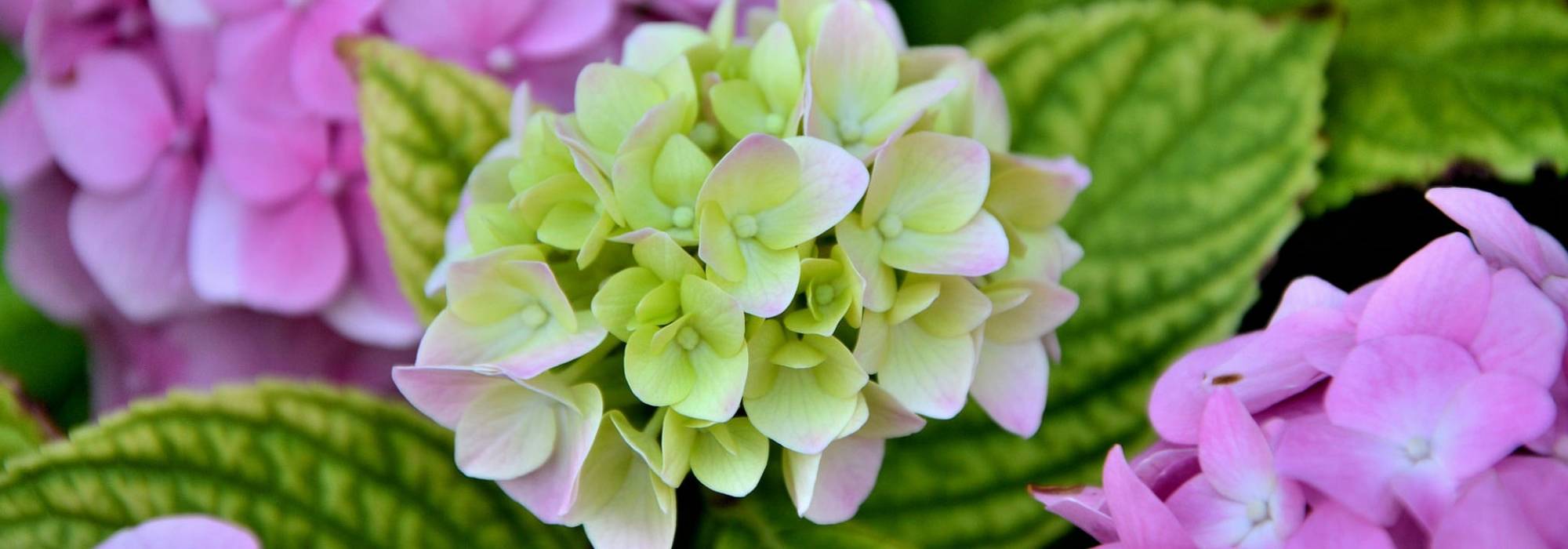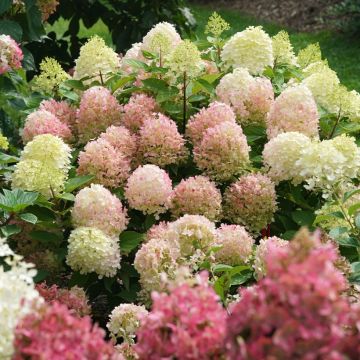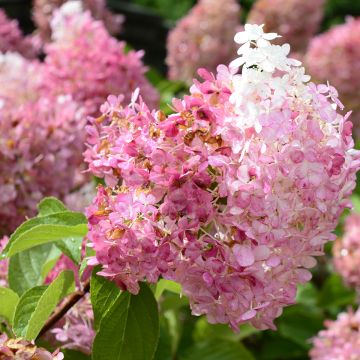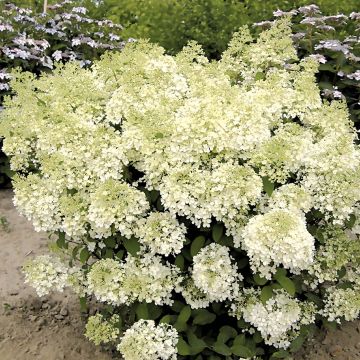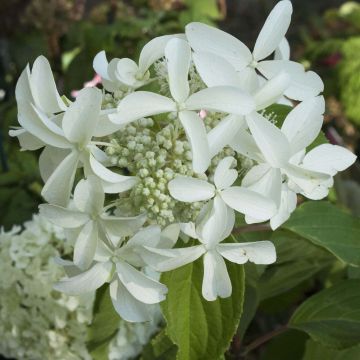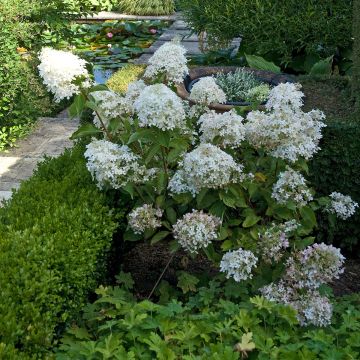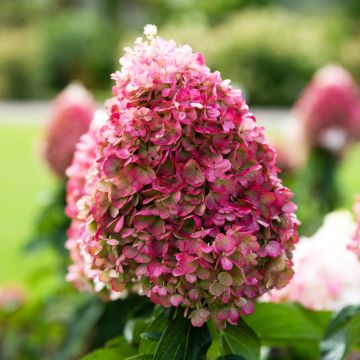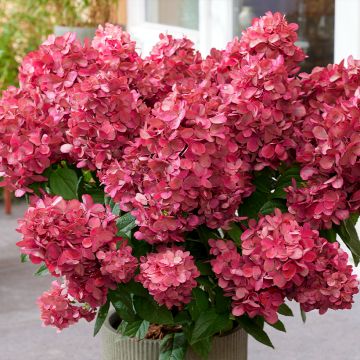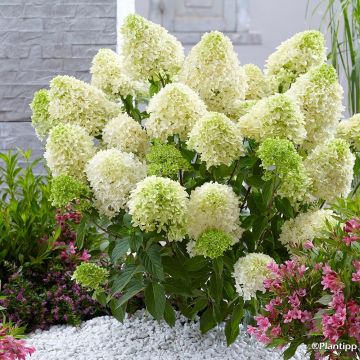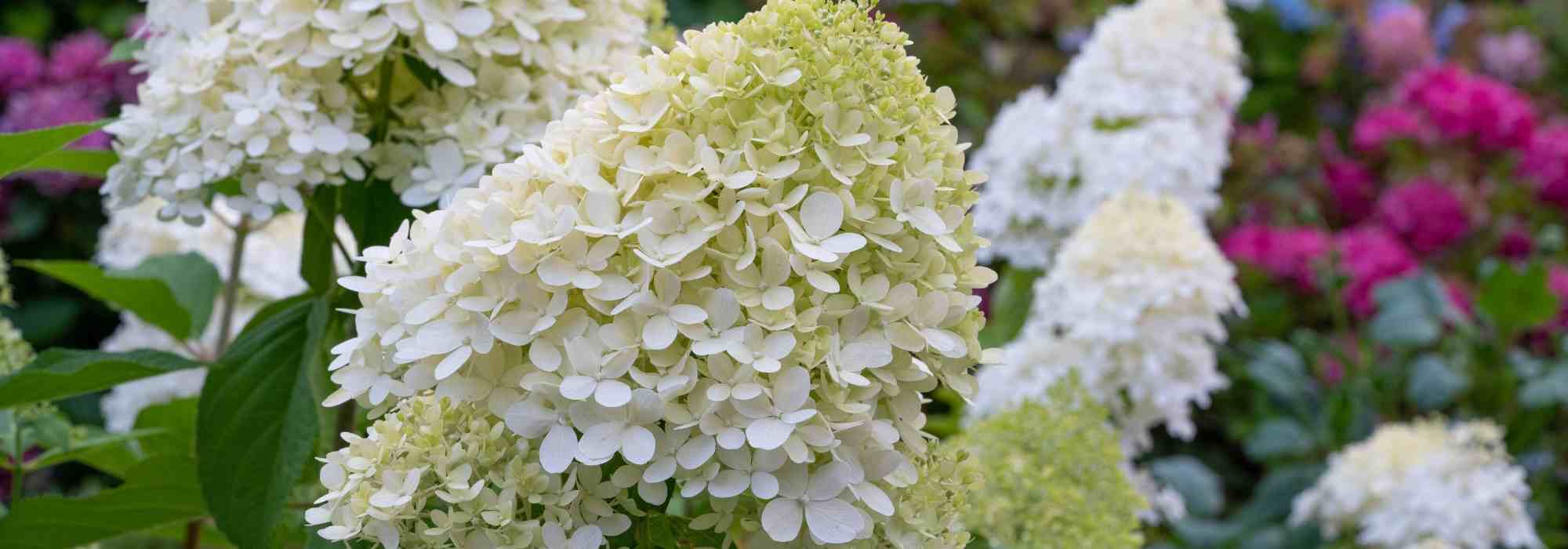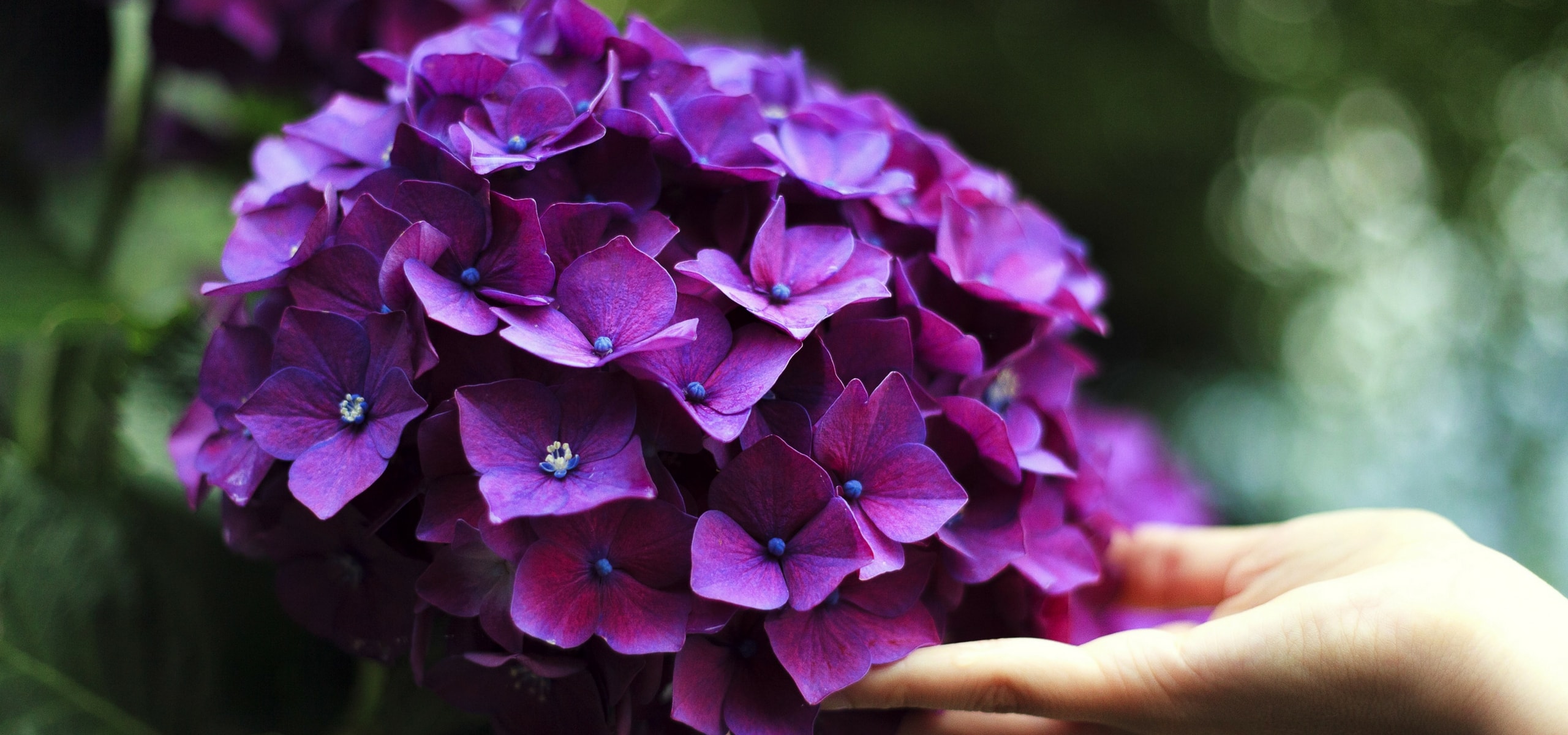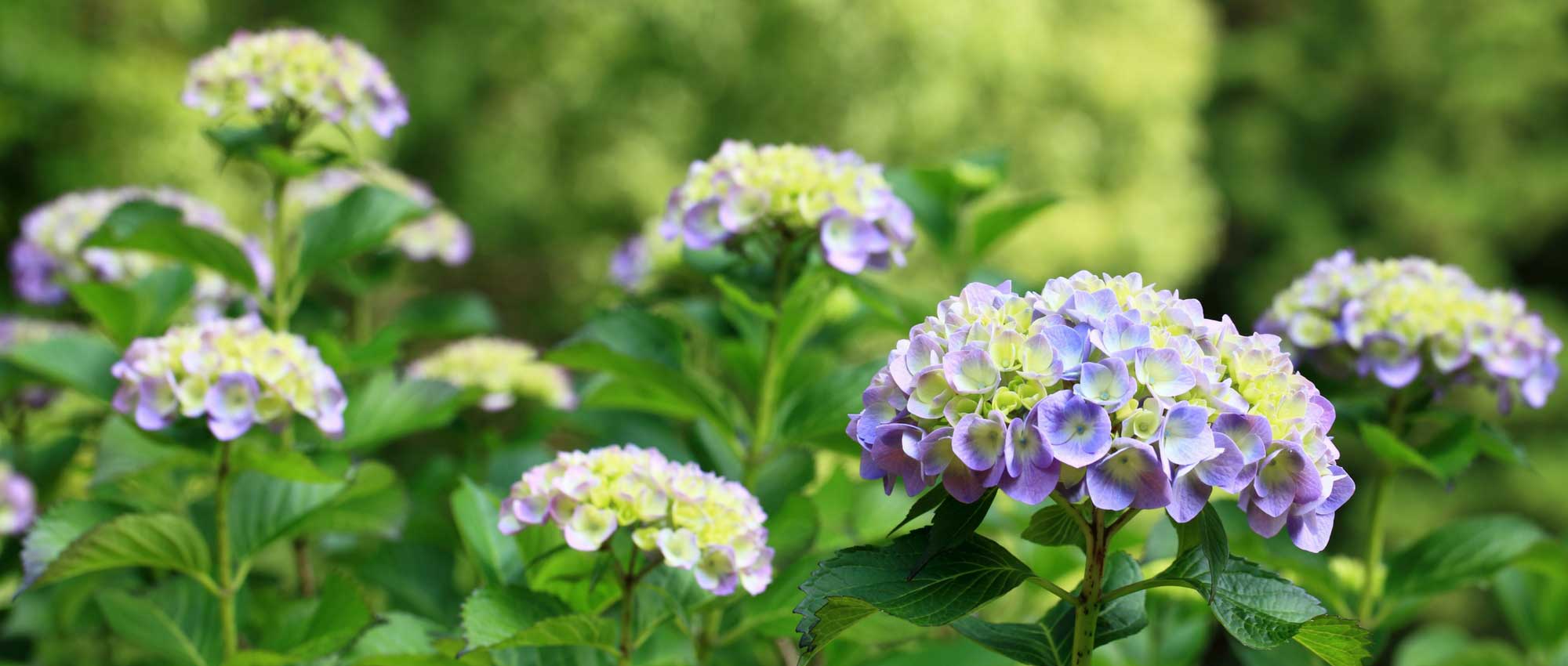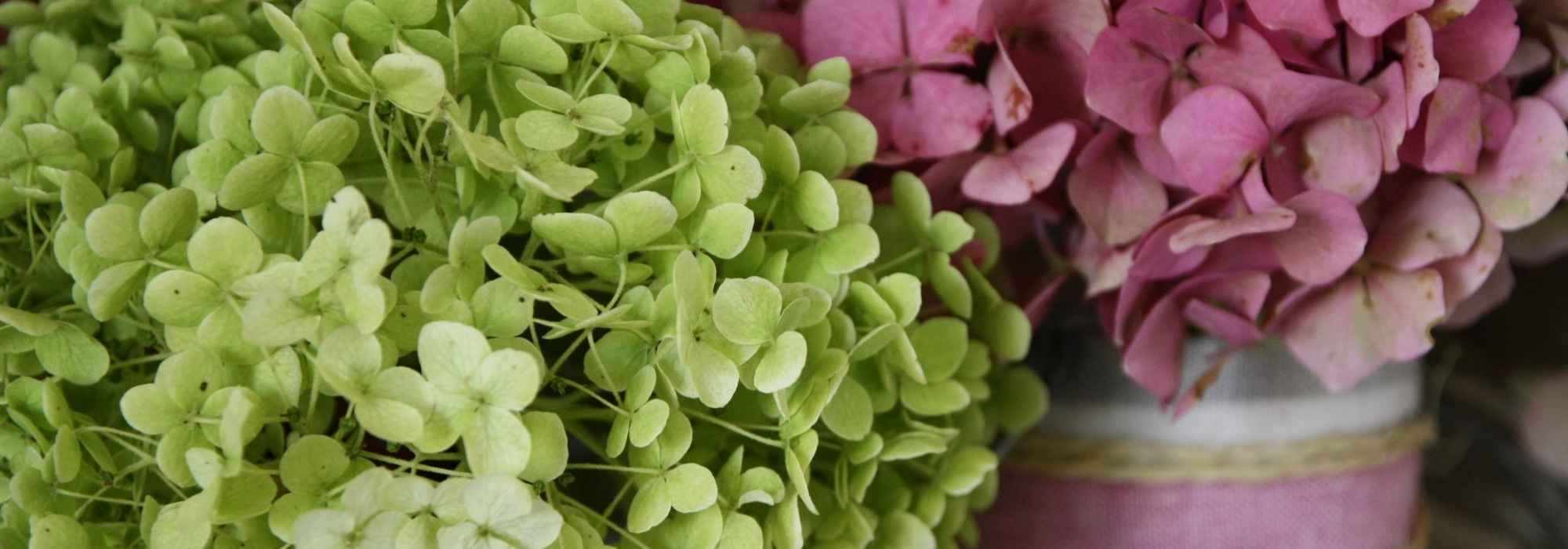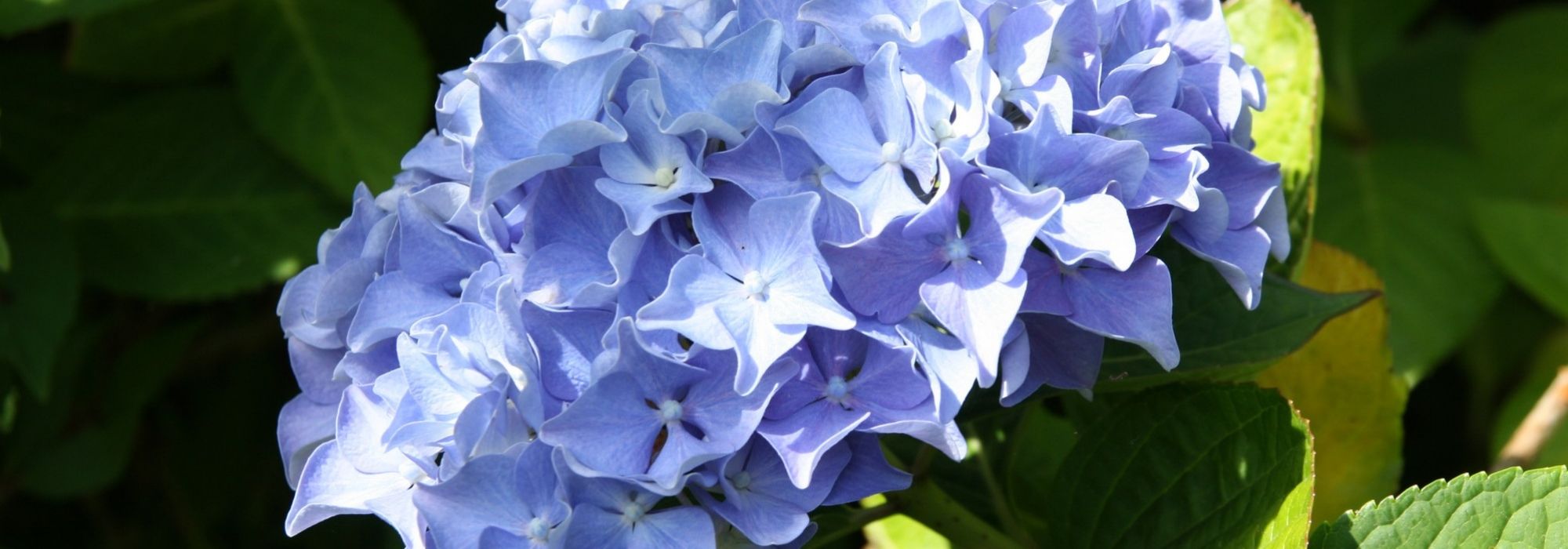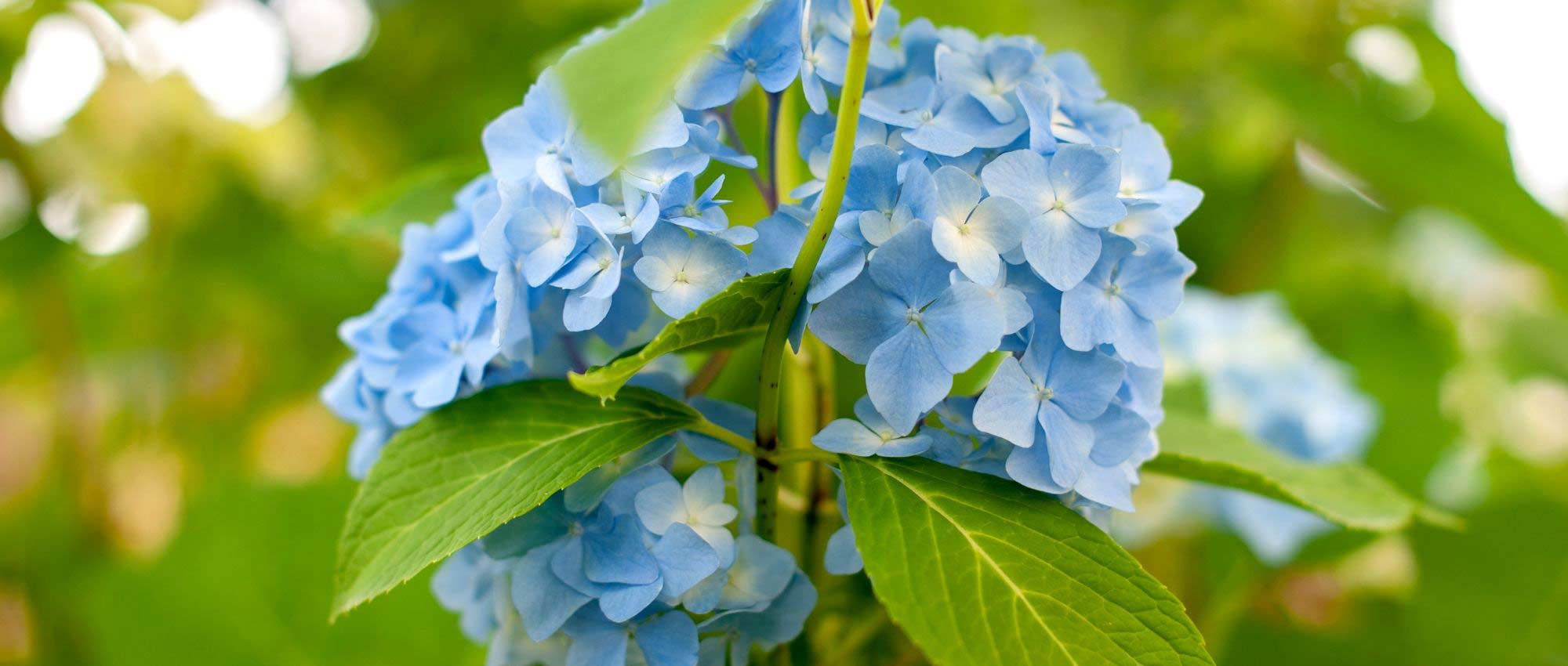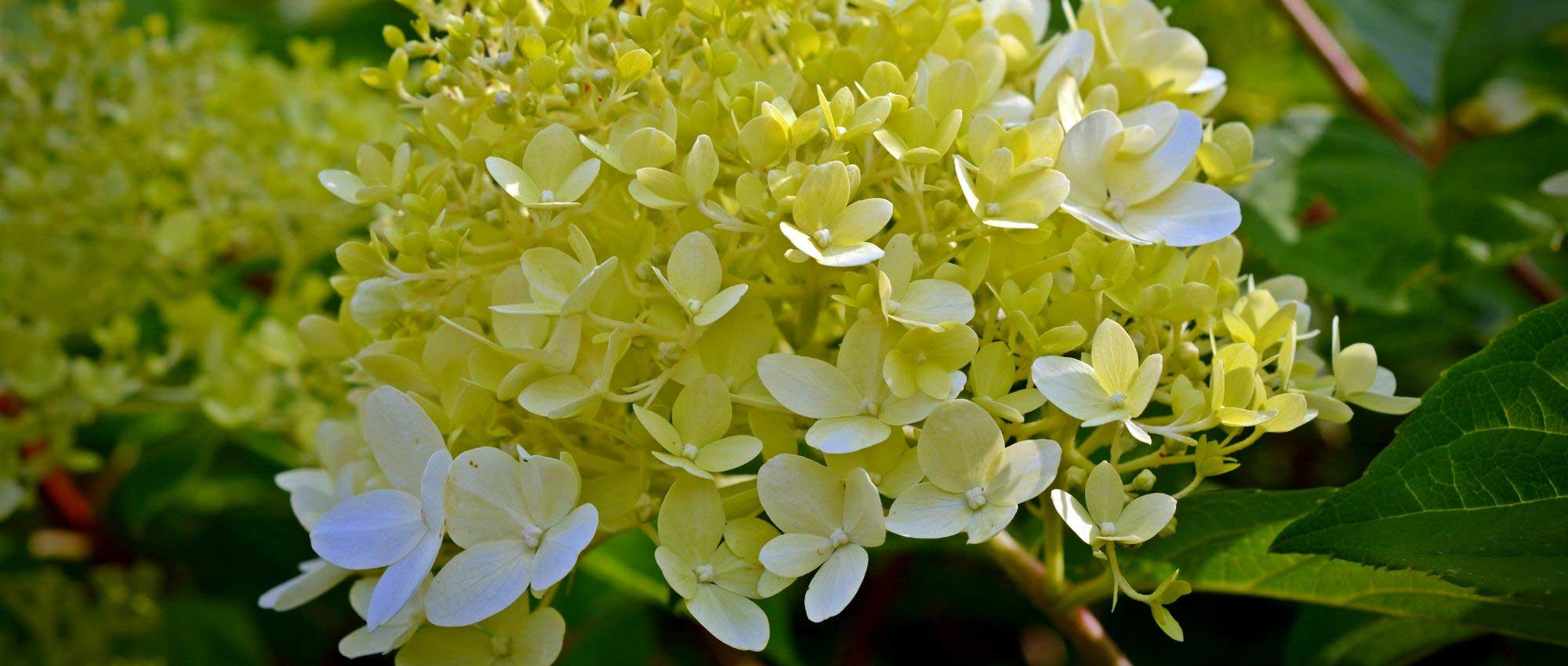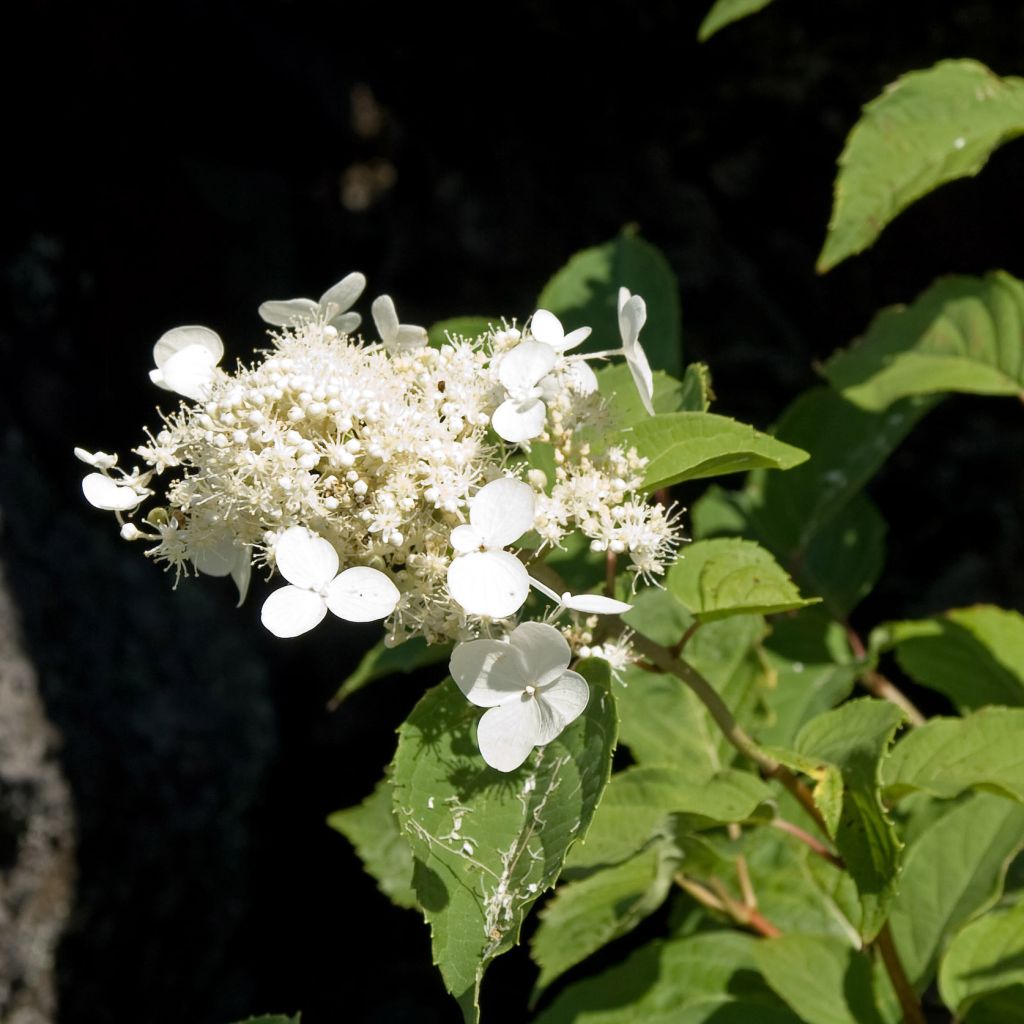

Hortensia paniculata White Moth
Hydrangea paniculata White Moth
Hydrangea paniculata White Moth
Paniculate Hydrangea, Panicled Hydrangea, Panicle Hydrangea
A splendid young plant! It withstands the winter of Montreal. I have had it for ten years. And what's more, the flowers are fragrant.
Michelle, 24/09/2020
Special offer!
Receive a €20 voucher for any order over €90 (excluding delivery costs, credit notes, and plastic-free options)!
1- Add your favorite plants to your cart.
2- Once you have reached €90, confirm your order (you can even choose the delivery date!).
3- As soon as your order is shipped, you will receive an email containing your voucher code, valid for 3 months (90 days).
Your voucher is unique and can only be used once, for any order with a minimum value of €20, excluding delivery costs.
Can be combined with other current offers, non-divisible and non-refundable.
Home or relay delivery (depending on size and destination)
Schedule delivery date,
and select date in basket
This plant carries a 24 months recovery warranty
More information
We guarantee the quality of our plants for a full growing cycle, and will replace at our expense any plant that fails to recover under normal climatic and planting conditions.
Does this plant fit my garden?
Set up your Plantfit profile →
Description
Hydrangea paniculata 'White Moth' is a remarkable variety. It stands out with an undisciplined habit, resembling a sprawling and irregular bush. It bears huge, globular, white and vaporous panicles, which take on a pretty green hue in autumn. Its growth rate is quite fast. It is more accommodating than the large-leaf hybrids, and therefore deserves to be highlighted, alone, for its unique charm. Its long summer flowering is attractive until frost.
Hydrangea paniculata belongs to the Hydrangeaceae family, native to China and Japan. Hydrangea paniculata are resistant to drought and easy to grow even in non-acidic soil. They bloom generously from June until frost. Planted in the sun, their inflorescences change colour in the autumn.
'White Moth', derived from the famous cultivar 'Unique', forms an irregular but fairly compact bushy mass, quickly reaching 1.8m (6ft) in height and 2m (7ft) in spread, which remains moderate for a paniculate hydrangea. From the beginning of July, it blossoms on one-year-old wood with large, conical or spherical panicles, sometimes reaching 25cm (10in) in diameter and 30cm (12in) in length. They gather a cloud of single sterile florets, carried by long pedicels, evolving from a white hue to a beautiful pale green, sometimes tinged with soft pink, when the bush is planted in a sunny location. This inflorescence, where a few tiny cream sterile florets mix, bends elegantly, giving an impression of opulence and lightness. 'White Moth' has a ramified and disorderly vegetation, and branches covered with dark green ovate leaves, turning yellow in autumn, before disappearing in winter.
Hydrangea paniculata differs from its cousin Hydrangea macrophylla with its good tolerance to sun, sea spray, and relative drought. When planted in any good garden soil, without too much limestone, 'White Moth' shows rapid growth. This is a very hardy variety, to be planted alone for its strong presence, in a hedge or in a group planting, or even in a light undergrowth, mixed with other hydrangeas, to play with contrasts and shapes. You can also plant it with grasses such as miscanthus, Panicum virgatum 'Squaw', and Stipa, as well as fuchsia magellanica. At Vaterival, they chose to match it with Miscanthus 'Cosmopolitan', variegated with white, in an original and refined scene.
Hydrangea paniculata White Moth in pictures
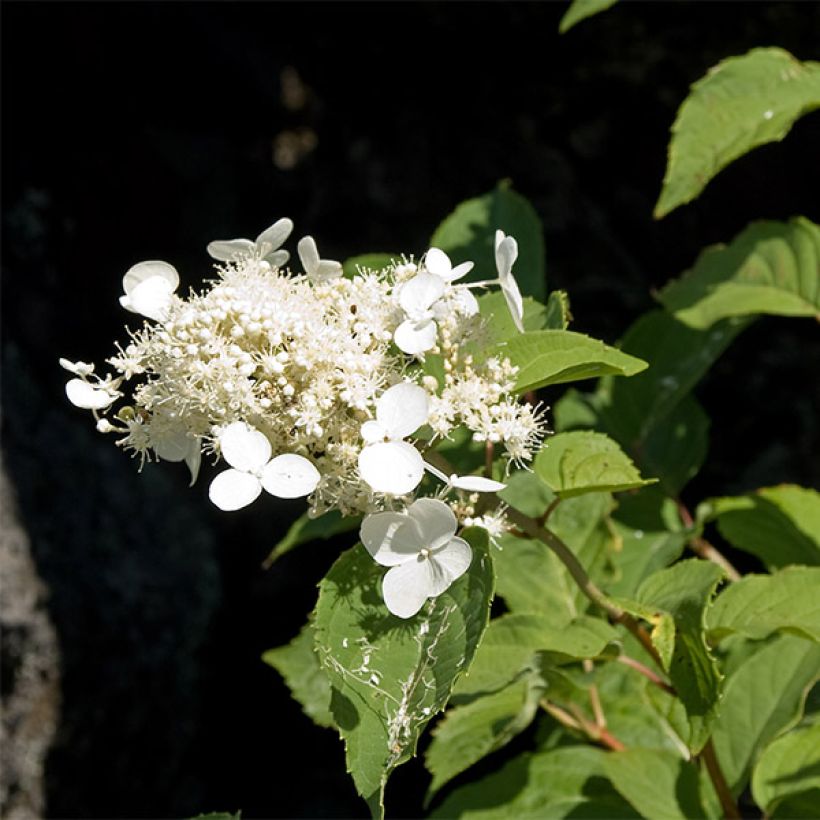

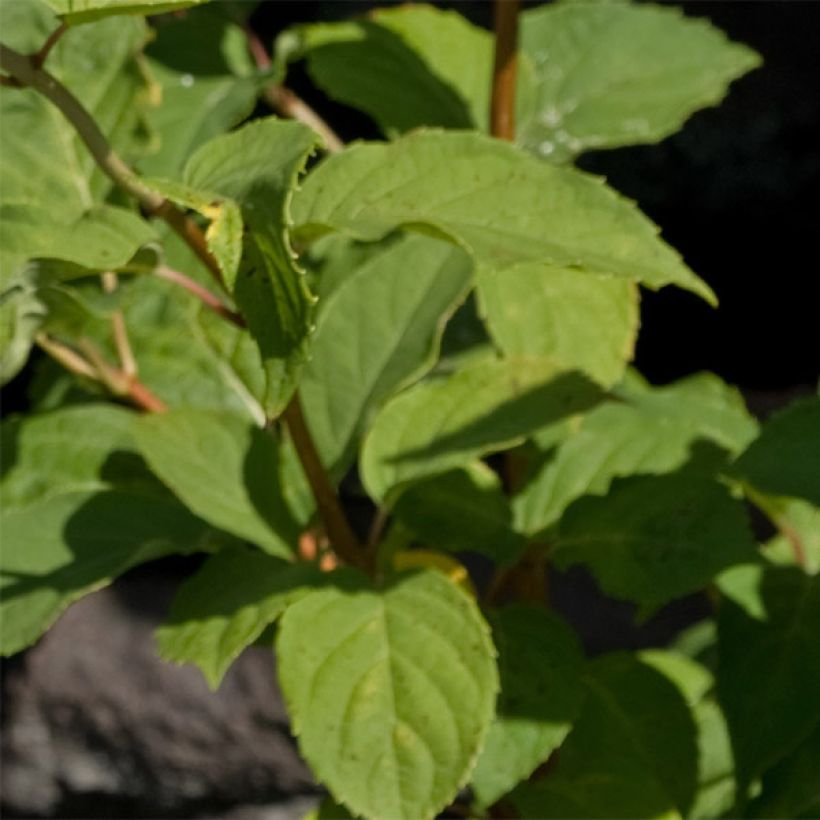

Plant habit
Flowering
Foliage
Botanical data
Hydrangea
paniculata
White Moth
Hydrangeaceae
Paniculate Hydrangea, Panicled Hydrangea, Panicle Hydrangea
Cultivar or hybrid
Other Hydrangea Paniculata
View all →Planting and care
'White Moth' is not very demanding about the nature of the soil, as long as it is not too heavy, and not too chalky. It requires a semi-shaded or sunny but not scorching exposure. Plant it in deeply worked soil. A good base fertiliser will promote the recovery of your young plant and nourish it without risk of burning. If your soil is dry, mix our water retainer, stockosorb, with the soil when filling the planting hole and plan a surface watering basin.
At the end of summer, leave the dried panicles on the bush as they will protect the terminal shoots of the branches in winter. Remove the dead flowers at the end of February or at the first sign of warm weather. The spring vegetation is quite late.
Planting period
Intended location
Care
Planting & care advice
-
, onOrder confirmed
Reply from on Promesse de fleurs
Haven't found what you were looking for?
Hardiness is the lowest winter temperature a plant can endure without suffering serious damage or even dying. However, hardiness is affected by location (a sheltered area, such as a patio), protection (winter cover) and soil type (hardiness is improved by well-drained soil).

Photo Sharing Terms & Conditions
In order to encourage gardeners to interact and share their experiences, Promesse de fleurs offers various media enabling content to be uploaded onto its Site - in particular via the ‘Photo sharing’ module.
The User agrees to refrain from:
- Posting any content that is illegal, prejudicial, insulting, racist, inciteful to hatred, revisionist, contrary to public decency, that infringes on privacy or on the privacy rights of third parties, in particular the publicity rights of persons and goods, intellectual property rights, or the right to privacy.
- Submitting content on behalf of a third party;
- Impersonate the identity of a third party and/or publish any personal information about a third party;
In general, the User undertakes to refrain from any unethical behaviour.
All Content (in particular text, comments, files, images, photos, videos, creative works, etc.), which may be subject to property or intellectual property rights, image or other private rights, shall remain the property of the User, subject to the limited rights granted by the terms of the licence granted by Promesse de fleurs as stated below. Users are at liberty to publish or not to publish such Content on the Site, notably via the ‘Photo Sharing’ facility, and accept that this Content shall be made public and freely accessible, notably on the Internet.
Users further acknowledge, undertake to have ,and guarantee that they hold all necessary rights and permissions to publish such material on the Site, in particular with regard to the legislation in force pertaining to any privacy, property, intellectual property, image, or contractual rights, or rights of any other nature. By publishing such Content on the Site, Users acknowledge accepting full liability as publishers of the Content within the meaning of the law, and grant Promesse de fleurs, free of charge, an inclusive, worldwide licence for the said Content for the entire duration of its publication, including all reproduction, representation, up/downloading, displaying, performing, transmission, and storage rights.
Users also grant permission for their name to be linked to the Content and accept that this link may not always be made available.
By engaging in posting material, Users consent to their Content becoming automatically accessible on the Internet, in particular on other sites and/or blogs and/or web pages of the Promesse de fleurs site, including in particular social pages and the Promesse de fleurs catalogue.
Users may secure the removal of entrusted content free of charge by issuing a simple request via our contact form.
The flowering period indicated on our website applies to countries and regions located in USDA zone 8 (France, the United Kingdom, Ireland, the Netherlands, etc.)
It will vary according to where you live:
- In zones 9 to 10 (Italy, Spain, Greece, etc.), flowering will occur about 2 to 4 weeks earlier.
- In zones 6 to 7 (Germany, Poland, Slovenia, and lower mountainous regions), flowering will be delayed by 2 to 3 weeks.
- In zone 5 (Central Europe, Scandinavia), blooming will be delayed by 3 to 5 weeks.
In temperate climates, pruning of spring-flowering shrubs (forsythia, spireas, etc.) should be done just after flowering.
Pruning of summer-flowering shrubs (Indian Lilac, Perovskia, etc.) can be done in winter or spring.
In cold regions as well as with frost-sensitive plants, avoid pruning too early when severe frosts may still occur.
The planting period indicated on our website applies to countries and regions located in USDA zone 8 (France, United Kingdom, Ireland, Netherlands).
It will vary according to where you live:
- In Mediterranean zones (Marseille, Madrid, Milan, etc.), autumn and winter are the best planting periods.
- In continental zones (Strasbourg, Munich, Vienna, etc.), delay planting by 2 to 3 weeks in spring and bring it forward by 2 to 4 weeks in autumn.
- In mountainous regions (the Alps, Pyrenees, Carpathians, etc.), it is best to plant in late spring (May-June) or late summer (August-September).
The harvesting period indicated on our website applies to countries and regions in USDA zone 8 (France, England, Ireland, the Netherlands).
In colder areas (Scandinavia, Poland, Austria...) fruit and vegetable harvests are likely to be delayed by 3-4 weeks.
In warmer areas (Italy, Spain, Greece, etc.), harvesting will probably take place earlier, depending on weather conditions.
The sowing periods indicated on our website apply to countries and regions within USDA Zone 8 (France, UK, Ireland, Netherlands).
In colder areas (Scandinavia, Poland, Austria...), delay any outdoor sowing by 3-4 weeks, or sow under glass.
In warmer climes (Italy, Spain, Greece, etc.), bring outdoor sowing forward by a few weeks.






























